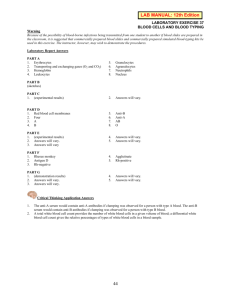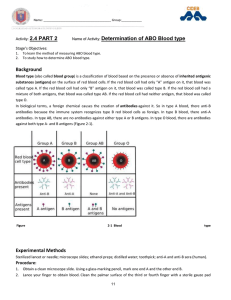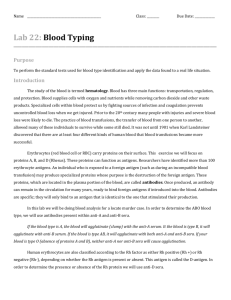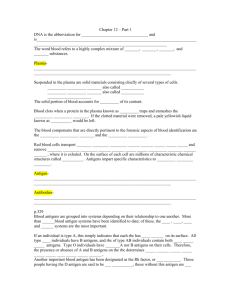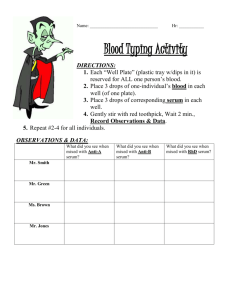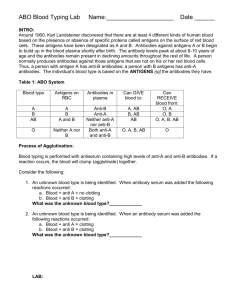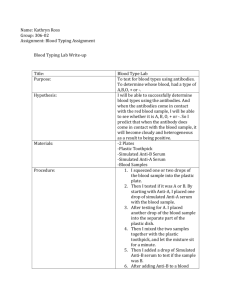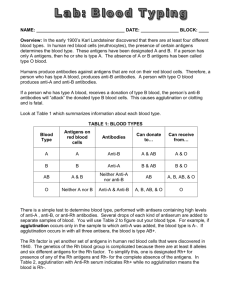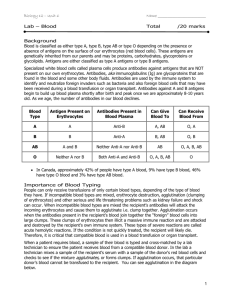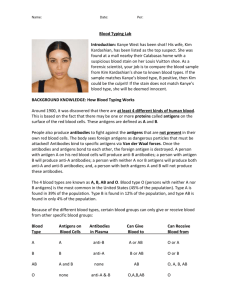Blood Typing
advertisement
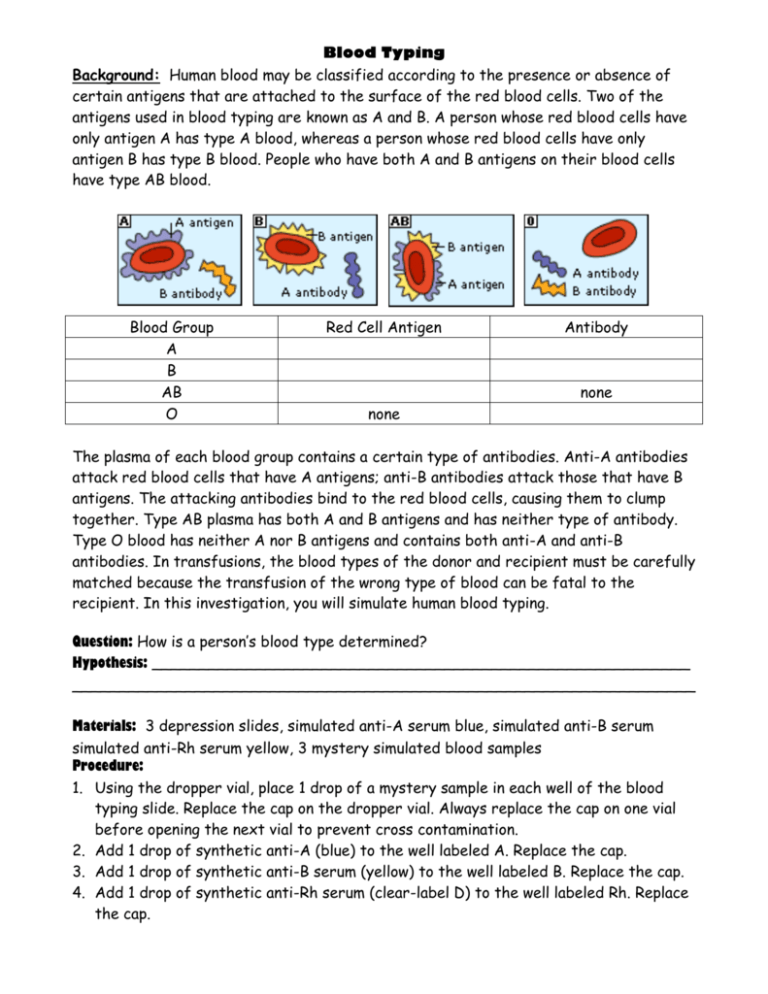
Blood Typing Background: Human blood may be classified according to the presence or absence of certain antigens that are attached to the surface of the red blood cells. Two of the antigens used in blood typing are known as A and B. A person whose red blood cells have only antigen A has type A blood, whereas a person whose red blood cells have only antigen B has type B blood. People who have both A and B antigens on their blood cells have type AB blood. Blood Group A B AB O Red Cell Antigen Antibody none none The plasma of each blood group contains a certain type of antibodies. Anti-A antibodies attack red blood cells that have A antigens; anti-B antibodies attack those that have B antigens. The attacking antibodies bind to the red blood cells, causing them to clump together. Type AB plasma has both A and B antigens and has neither type of antibody. Type O blood has neither A nor B antigens and contains both anti-A and anti-B antibodies. In transfusions, the blood types of the donor and recipient must be carefully matched because the transfusion of the wrong type of blood can be fatal to the recipient. In this investigation, you will simulate human blood typing. Question: How is a person’s blood type determined? Hypothesis: _________________________________________________________ __________________________________________________________________ Materials: 3 depression slides, simulated anti-A serum blue, simulated anti-B serum simulated anti-Rh serum yellow, 3 mystery simulated blood samples Procedure: 1. Using the dropper vial, place 1 drop of a mystery sample in each well of the blood typing slide. Replace the cap on the dropper vial. Always replace the cap on one vial before opening the next vial to prevent cross contamination. 2. Add 1 drop of synthetic anti-A (blue) to the well labeled A. Replace the cap. 3. Add 1 drop of synthetic anti-B serum (yellow) to the well labeled B. Replace the cap. 4. Add 1 drop of synthetic anti-Rh serum (clear-label D) to the well labeled Rh. Replace the cap. 5. Using a different toothpick for each well, gently stir the synthetic blood and antiserum drops for 30 seconds. Remember to discard each toothpick after a single use to avoid contamination of your samples. 6. Carefully examine the thin films of liquid mixture left behind. If a liquid remains unchanged then there is no reaction with antibodies. If the sample appears clumpy, agglutination has occurred. This means the antibodies have attacked the red blood cells and destroyed them! 7. Determine the blood type of the sample using the data table below. Answer yes or no as to whether clumping occurred in each sample. A positive agglutination, clumping, reaction indicates the blood type. Record the results for the first blood sample in the data table 8. Thoroughly rinse the blood typing slide, and then repeat these steps for the other synthetic blood samples. Data Table: Y= clumping Sample # _____ N= no clumping Sample # _____ Sample # _____ Anti-A Anti-B Rh Blood Type Analysis Questions: Tom and Jane participate in a Red Cross blood drive. Both are first-time donors. As part of the screening process, their blood is typed. Tom is A+. Jane is AB+. 1. What blood group antibody is found in Tom’s blood? 2. What blood group antigens are found in Jane’s blood? 3. During a robbery a thief gets cut by a piece of broken glass. You are a forensic detective called to the scene. You test a sample of blood left behind by the thief. It is O–. While you are there, police bring in a suspect with a cut forearm who was detained just three blocks from the store. You take a sample of the suspect’s blood and mix it with anti-A. Immediately you know that the suspect is not the person cut by the broken glass. How do you know the suspect is not the thief?
